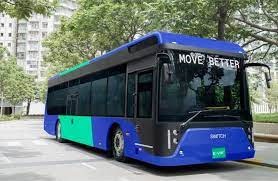Electric mobility, also known as e-mobility, refers to the use of electric power to propel vehicles instead of traditional internal combustion engines that rely on fossil fuels. Electric mobility encompasses a wide range of vehicles, from electric cars and bikes to buses, trucks, and even electric scooters. These vehicles are powered by electricity stored in batteries, fuel cells, or supercapacitors. Key components and features of electric mobility: Electric Vehicles (EVs): Electric vehicles are the primary representatives of electric mobility. They are equipped with electric motors that run on electricity rather than gasoline or diesel. There are two main types of EVs: a. Battery Electric Vehicles (BEVs): These vehicles are solely powered by electricity stored in rechargeable batteries. They have no internal combustion engine and produce zero tailpipe emissions. b. Plug-in Hybrid Electric Vehicles (PHEVs): PHEVs combine an electric motor with an internal combustion engine. They can be charged using electricity, and some models can operate solely on electric power for shorter distances before switching to the internal combustion engine for longer journeys. Charging Infrastructure: Electric mobility requires a network of charging stations where electric vehicles can be charged. Charging infrastructure includes various charging levels, from standard household outlets (Level 1) to Level 2 chargers (faster charging for home or public use) and Level 3 DC fast chargers (rapid charging for public use). Battery Technology: Advanced lithium-ion batteries are commonly used in electric vehicles. Improvements in battery technology are crucial for increasing the range, reducing charging times, and making electric vehicles more cost-effective. Energy Management: Electric mobility involves efficient energy management to optimize battery usage and extend vehicle range. Regenerative braking, where the vehicle captures energy during braking and stores it back into the battery, is one example of energy-saving technology. Benefits of Electric Mobility: Environmental Sustainability: Electric vehicles produce lower or zero tailpipe emissions, reducing air pollution and mitigating the impact of transportation on climate change. Energy Efficiency: Electric motors are more efficient than internal combustion engines, leading to lower energy consumption and operating costs. Reduced Dependency on Fossil Fuels: Electric mobility reduces reliance on finite fossil fuels and contributes to energy diversification and security. Quiet and Smooth Operation: Electric vehicles operate more quietly and with smoother acceleration compared to traditional vehicles with internal combustion engines. Public Health: Electric mobility helps improve air quality in urban areas, leading to potential health benefits for residents by reducing exposure to harmful pollutants. Technological Advancements: The shift towards electric mobility drives advancements in battery technology, charging infrastructure, and smart grid integration. Challenges and Considerations: Despite the numerous benefits, electric mobility also faces some challenges and considerations: Range Anxiety: Concerns about limited driving range and charging infrastructure may discourage some potential buyers from adopting electric vehicles. Charging Infrastructure: The availability and accessibility of charging stations, particularly in rural areas, may need further expansion and investment. Battery Recycling: The recycling and disposal of lithium-ion batteries present environmental challenges that need to be addressed. Initial Cost: Electric vehicles can have a higher upfront cost than their internal combustion engine counterparts, although declining battery prices and incentives are helping to offset this. Grid Capacity: Widespread adoption of electric mobility requires the grid's ability to handle increased electricity demand, especially during peak charging times. As technology advances and awareness grows, electric mobility is expected to play a crucial role in achieving sustainable and cleaner transportation systems worldwide. Government incentives, industry innovation, and public support are essential in accelerating the transition to electric mobility and realizing its full potential in reducing emissions and improving the overall environmental impact of transportation.





